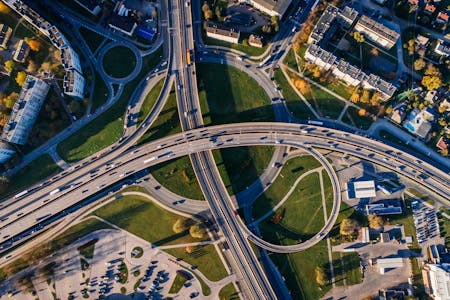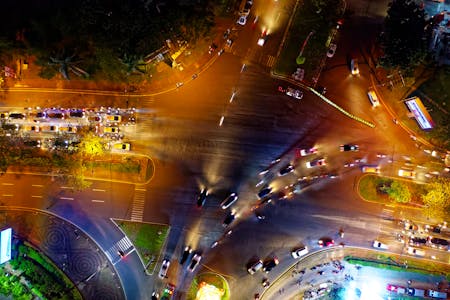

Houston, a bustling city in Texas, is known for its extensive road network and heavy traffic. However, with this comes the unfortunate reality of dangerous roads and intersections. Identifying these hotspots is crucial for improving road safety and reducing accidents.
This guide explores the most perilous roads and intersections in Houston, providing insights into the factors contributing to their dangers and the measures being taken to address them.
Texas Car Accident Numbers
| Statistic | Value |
|---|---|
| Fatality Rate | 1.45 deaths per 100 million vehicle miles traveled |
| Death Toll | 4,283 fatalities (2.81% decrease from 2022) |
| Serious Injury Crashes | 15,219 crashes |
| Serious Injuries | 18,752 people |
| Annual Vehicle Miles Traveled | 294.785 billion miles (1.34% increase from 2022) |
| Rural Traffic Fatalities | 2,263 deaths (52.84% of state total) |
| Single Vehicle Crashes | 1,368 deaths (31.94% of total) |
| Intersection-Related Fatalities | 1,120 deaths |
| Head-On Crashes | 635 deaths |
| Daily Fatalities | No deathless days in 2023 |
| Major Crashes | Five crashes with 6+ fatalities |
| Deadliest Day | September 9th with 25 deaths |
| Deadliest Months | June and August with 390 deaths each |
| Fatality Frequency | 1 person killed every 2 hours 3 minutes |
| Injury Frequency | 1 person injured every 2 minutes 6 seconds |
| Crash Frequency | 1 reportable crash every 56 seconds |
| Non-Restraint Fatalities | 48.89% of fatalities |
| Total Injuries | 250,335 people |
| Motorcyclist Fatalities | 599 deaths (40% without helmets) |
| Pedestrian Fatalities | 807 deaths (0.98% decrease from 2022) |
| Pedalcyclist Fatalities | 105 deaths (15.38% increase from 2022) |
| DUI-Related Fatalities | 1,090 deaths (25.45% of total) |
| DUI Peak Time | 2:00 am to 2:59 am, predominantly on Sundays |
| Distracted Driving Fatalities | 403 deaths (17.25% decrease from 2022) |
| Bridge Collapse Fatalities | None |
Top 10 Most Dangerous Roads in Houston
Houston’s road network features several dangerous roads that pose significant risks to drivers and pedestrians alike. Understanding these roads and the factors that make them hazardous is the first step towards enhancing road safety.
I-45
I-45 is notorious for its high accident rate. This major highway sees a large volume of traffic daily, which, combined with its high speed limit, makes it a hotspot for accidents.
Frequent accidents often result from high speeds and heavy congestion. Notable accident hotspots along I-45 include areas near downtown Houston and sections where construction frequently occurs.
Safety measures such as increased police patrols and improved road signage are in place, but the road remains a significant concern for drivers.
Westheimer Road
Westheimer Road is another dangerous road in Houston. Known for its high traffic volume, this road runs through several commercial areas, leading to frequent congestion and accidents.
Common types of accidents here include rear-end collisions and pedestrian incidents due to the dense foot traffic.
Notable intersections on Westheimer Road include those at Beltway 8 and Post Oak Boulevard, which are particularly risky.
To address safety concerns, the city has proposed improvements such as better pedestrian crossings and traffic signal upgrades.
Airline Drive
Airline Drive experiences traffic patterns that contribute to its high accident rate.
The road’s accident statistics reveal a concerning trend, with many incidents involving both vehicles and pedestrians. Safety concerns are heightened due to nearby schools and heavy pedestrian traffic.
Efforts to reduce accidents on Airline Drive include enhanced crosswalks and increased lighting to improve visibility. These measures aim to protect both drivers and pedestrians.
Hillcroft Avenue
Hillcroft Avenue has a high accident rate, primarily due to heavy traffic and complex intersections.
Key contributing factors include driver inattention and high traffic density. The local community is significantly impacted by these accidents, leading to calls for improved safety measures.
Current safety initiatives include the installation of additional traffic lights and better signage to guide drivers.
Recommendations for further improvement include the construction of pedestrian overpasses to separate foot traffic from vehicles.
Beechnut Road
Accidents on Beechnut Road are frequent, with trends showing a mix of vehicle collisions and pedestrian incidents.
Contributing factors include high traffic volume and distracted driving. High-risk intersections along Beechnut Road include those near commercial centers and residential areas.
Safety initiatives such as increased traffic enforcement and public awareness campaigns are in place. The local response has been positive, with community members supporting efforts to make the road safer.
Antoine Drive
Antoine Drive faces significant traffic issues, leading to a high rate of accidents.
Common accident types include side-impact collisions at intersections. Safety concerns are heightened by the road’s proximity to schools and parks.
Accident prevention efforts include the implementation of school zones and reduced speed limits. These measures aim to protect both motorists and pedestrians, addressing the community’s safety concerns.
Cullen Boulevard
Cullen Boulevard is known for its high accident frequency.
Traffic conditions often lead to rear-end collisions and pedestrian accidents. Nearby points of interest such as schools and shopping centers increase the road’s usage, contributing to the risk.
Current safety measures include improved signage and the addition of speed bumps to slow traffic.
Proposed changes aim to further enhance safety, such as the installation of traffic cameras to monitor and enforce speed limits.
South Post Oak Road
Traffic and accident statistics for South Post Oak Road reveal a troubling trend.
Key problem areas include intersections with heavy traffic and poor visibility. Safety measures in place include increased police presence and improved road markings.
Community concerns focus on the need for better pedestrian infrastructure and traffic calming measures.
Improvement plans involve the construction of dedicated pedestrian pathways and enhanced lighting to improve visibility at night.
West Tidwell Road
Accident data for West Tidwell Road shows a high rate of collisions, particularly at intersections.
Contributing factors include high traffic volume and poor road conditions. High-risk intersections are often near commercial and residential areas.
Safety initiatives such as road resurfacing and improved traffic signal timing aim to reduce accidents. Community feedback highlights the need for ongoing maintenance and additional safety measures.
Almeda Road
Traffic and accident patterns on Almeda Road indicate a high-risk environment for both drivers and pedestrians. High-risk areas include intersections with complex traffic signals and heavy congestion.
Current safety efforts focus on enhancing visibility with better lighting and improved road markings. Local impact is significant, with residents advocating for more comprehensive safety measures.
Future plans include the installation of pedestrian bridges and increased traffic enforcement to deter reckless driving.
Most Dangerous Intersections in Houston
Houston is home to several intersections that pose significant risks to drivers and pedestrians. These intersections often see a high volume of traffic and complex traffic patterns, leading to frequent accidents.
Pease Street and Fannin Street
Pease Street and Fannin Street is a notoriously dangerous intersection in Houston, recording a high number of crashes each year.
Crash statistics show that this intersection experiences numerous accidents due to its heavy traffic and complex traffic signal system.
Contributing factors include driver impatience and failure to yield. Accidents are more frequent during rush hours when traffic congestion is at its peak.
Pedestrian safety concerns are significant due to the nearby offices and businesses, resulting in heavy foot traffic.
Planned improvements aim to enhance traffic signal timing and pedestrian crossings to reduce accidents.
Bissonnet Street and Westchester Avenue
The intersection of Bissonnet Street and Westchester Avenue sees frequent accidents, with statistics indicating a high accident frequency. Key causes include speeding, distracted driving, and poor visibility.
Traffic conditions at this intersection are often congested, especially during school drop-off and pick-up times.
Safety measures such as enhanced traffic enforcement and better signage are currently in place.
Recommendations for further improvements include the installation of traffic cameras and the addition of dedicated turning lanes to manage traffic flow better.
Main Street and Holcombe Boulevard
Main Street and Holcombe Boulevard is another high-risk intersection in Houston.
Accident trends show a high number of collisions, particularly during peak hours. Traffic analysis reveals that the intersection’s complex layout and heavy usage contribute to the high accident rate.
Contributing factors include driver confusion and red-light running. Current safety efforts focus on improving traffic signal coordination and increasing police presence.
The community is significantly impacted by these accidents, leading to calls for more comprehensive safety measures such as pedestrian overpasses and additional traffic signals.
Westheimer Road and Beltway 8
Westheimer Road and Beltway 8 is a critical intersection with a high accident rate.
Traffic volume at this intersection is extremely high, with many vehicles entering and exiting the Beltway.
Key problem areas include merging lanes and inadequate signage. Safety initiatives include the installation of better road markings and traffic lights to guide drivers.
Community concerns focus on the need for improved pedestrian infrastructure and clearer signage.
Proposed improvements involve the construction of pedestrian bridges and enhanced lighting to improve visibility during nighttime.
I-10 and I-45 Interchange
The I-10 and I-45 interchange is a complex intersection with a high accident frequency.
Traffic patterns reveal heavy congestion and frequent lane changes, contributing to accidents. Contributing factors include driver confusion and aggressive driving.
Safety efforts focus on improving signage and lane markings to guide drivers through the interchange. The community is impacted by frequent traffic jams and accidents, leading to calls for better traffic management solutions.
Proposed changes include the installation of electronic signboards and the development of clearer road markings.
Legal Processes for Car Accident Claims in Houston
Understanding the legal processes for car accident claims in Houston is crucial for those involved in accidents on the city’s dangerous roads and intersections.
Navigating these processes can be complex, but knowing the steps involved can help ensure that your rights are protected and that you receive the compensation you deserve.
Filing a Car Accident Claim
- Report the Accident
- Notify Your Insurance Company
- Collect Evidence at the Scene
- Seek Medical Attention:
- Keep Detailed Medical Records
- Determine Liability
- Negotiate with Insurance Companies
- Consider Legal Action
- Engage in Discovery
- Prepare for Trial
Get the Legal Help You Deserve After a Houston Car Accident
If you need assistance with a car accident claim, Goldenzweig Law is here to support you. Contact us today for a free consultation with a Houston car accident lawyer.
Call 713-903-3988 to ensure that your rights are protected and you receive the compensation you deserve.
Navigation
Related Posts


What is a Non Dot Recordable Accident?
Continue Reading

